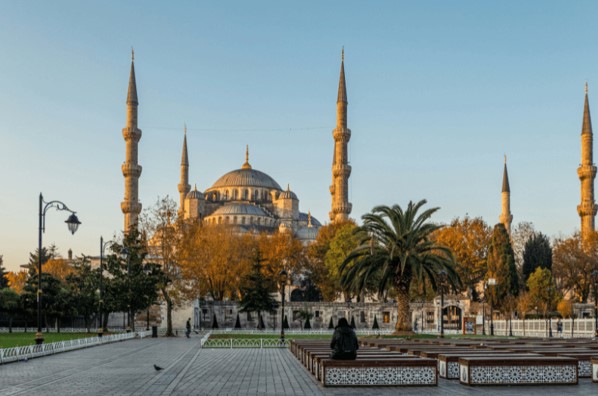Yesterday, the world’s biggest-at any time hydrogen-run plane took off from an airport in the U.K., designed a 10-mile circle in the air, and landed once more about 10 minutes later on. The plane, a Dornier 228 19-seat turboprop extensively modified by startup ZeroAvia, wasn’t particularly a jumbo jet, but it still accounts for a substantial action in the nascent world of zero emission flight. The previous history for premier hydrogen plane, also held by ZeroAvia, was for a 6-seat aircraft.
On board, a pair of gas cells transformed hydrogen into electrical energy to operate an electric motor on the plane’s left wing, aided by a lithium-ion battery that extra additional electric power for the duration of takeoff. In scenario something went erroneous with the zero-carbon setup, the plane’s other propeller was run by a typical kerosine motor. And to continue to keep points straightforward, the take a look at airplane only experienced about 10 kilograms of hydrogen on board (22 lbs), adequate to fly for about 30 minutes. “In the goal configuration for commercial [flights], we’re wanting at 80 to 100 kilos of hydrogen on board. So noticeably more time assortment,” suggests Val Miftakhov, ZeroAvia’s CEO.
This existing airplane is a stepping stone in the company’s more substantial ambitions. They’re at present doing the job on a hydrogen power system for a 76-seat regional plane, which could be ready all around 2026.
The aviation marketplace creates about 2{6932ee47e64f4ce8eedbbd5224581f6531cba18a35225771c06e4f1b3f0d9667} of all humanity’s carbon dioxide emissions, a share that is envisioned to increase as air vacation expands, with many analysts anticipating the sector to triple by 2050. It’s essential to come across sustainable options. But the physical constraints that planes work under—they have to be light-weight, refuel speedily, and carry ample saved electrical power on board to make it a respectable length just before they have to refuel again—means that earning a green substitute is far more hard than, say, constructing electric cars and trucks.
Some startups are doing work to produce fully electric powered, battery-run planes, with some accomplishment, though several types are comparatively little. Alice, a battery-electrical plane developed by startup Eviation, which had its very first shorter test flight very last slide, can have 9 travellers. The most significant battery run airplane, an electrified Cessna Grand Caravan to start with flown in 2020, can have 14 travellers. Other companies are betting on so-named “e-fuels,” which use chemical processes to transform renewable strength into liquid fuels like kerosine, which then could be used by planes of any size, and several airways are investing in scaling up this seemingly basic remedy. But many processes to generate that gasoline rely on natural and organic feedstocks, and there in the long run could not be adequate to go around. That leaves batteries and hydrogen as two more time-term clean electricity methods.
Browse much more: We’re Gonna Want a Greener Boat
Miftakhov, a former electric vehicle charging entrepreneur, claims that battery driven planes have a shot at decarbonizing the sector for small, small-selection planes, but that hydrogen is the only sensible selection for decarbonizing lengthier routes flown by larger aircraft. “If you do the math, there is truly a limitation on how substantially electrical power you can shop in the battery,” Miftakhov states. “You’re not likely to be equipped to run a 787 more than the Atlantic on that electrical power resource.”
Those lengthier flights account for the lionshare of the airline industry’s emissions. In 2020, long flights of much more than 4,000km (2,485 mi.) constituted just 6{6932ee47e64f4ce8eedbbd5224581f6531cba18a35225771c06e4f1b3f0d9667} of all flights departing from European airports, but accounted for far more than half of full flight emissions, according to an evaluation by Eurocontrol. The shortest flights of 500 km (310 mi.) or fewer, the ballpark selection of those getting targeted by battery-electrical airplane businesses, were being about 30{6932ee47e64f4ce8eedbbd5224581f6531cba18a35225771c06e4f1b3f0d9667} of departing flights, and 4{6932ee47e64f4ce8eedbbd5224581f6531cba18a35225771c06e4f1b3f0d9667} of emissions.
In get for battery-driven flight to compete further than extremely limited flying routes, claims Miftakhov, batteries would have to retail outlet a large amount much more ability, charge extremely quick, and final for countless numbers of battery cycles before they require to be changed. “These are at purely natural conflict with every single other,” he suggests. “To transfer all these three by an buy of magnitude each is a monumental problem.”
Hydrogen, on the other hand, has plenty of vitality density to energy the premier planes, according to Miftakhov. (Nevertheless even compressed hydrogen requires up a larger volume on board a plane than traditional kerosine.) European aircraft huge Airbus, for instance, is working on building large hydrogen engines, which it claims it will be capable to exhibit in the subsequent 4 yrs. And compared with e-fuels, manufacturing hydrogen doesn’t have to have challenging chemical processes—it can even be made at an airport if need to have be.
“Eventually, I believe it’s all heading to be… electric powered motors run by hydrogen gas cells,” Miftakhov suggests. “15 to 20 several years out—obviously uncertain—we’ll get the technology to a place when it can ability some of the premier planes out there.”
Extra Must-Reads From TIME




More Stories
A Golden Week for China Air Travel May Stem Drop in Oil Prices
Why is flying in the summer so expensive? Cheap flights can be scarce
Brace yourself for a summer of air travel hell